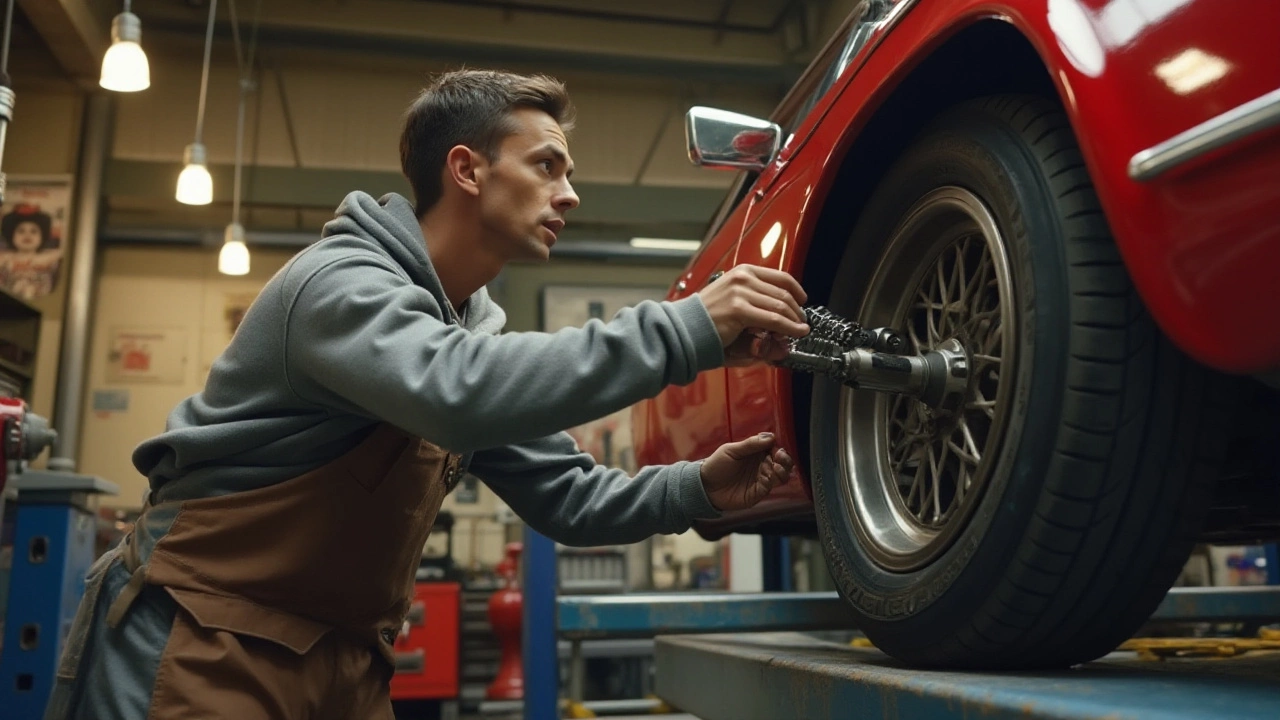Cut Springs: How to Lower Your Car Without Breaking Anything
Thinking about dropping your ride a few inches? Cutting springs is the cheapest way to get a lower, sharper look, but it can also bite you if you don’t know what you’re doing. Below you’ll find straight‑forward steps, the biggest pitfalls, and when you should stop cutting and consider a full suspension upgrade.
Why Cut Springs in the First Place?
Most owners choose to cut springs because it’s cheap and quick. A stock set of springs can be trimmed with a hacksaw for under £20, delivering a noticeable drop without buying new parts. The lower stance improves handling a bit, especially on cornering, and gives your car a sportier profile. However, the trade‑off is reduced ride comfort and extra stress on shocks, bushings, and wheel bearings.
Step‑by‑Step: Cutting Springs Safely
1. Measure the drop you want. Most DIYers aim for 10–20mm. Mark the spring at the desired length with a marker. Remember, the more you cut, the harsher the ride gets.
2. Prepare the tools. You’ll need a sturdy bench, a metal‑cutting hacksaw or a rotary tool with a metal cutting disc, a file for smoothing edges, and a spring compressor if you plan to re‑install the same springs later.
3. Secure the spring. Place the spring on the bench and clamp it firmly. If you have a spring compressor, lock the spring in place so it doesn’t snap back when you cut.
4. Cut – slowly. Make short, even strokes. Rushing can cause the blade to bind and the spring to wobble, creating an uneven cut. After you finish, file both ends smooth to avoid sharp metal that can damage shock absorbers.
5. Re‑install and test. Put the trimmed springs back, torque the bolts to spec, and take a short drive. Listen for any clunking noises and feel if the car is too harsh. If it feels unstable, you may have cut too much or need stiffer shocks.
If you’re not comfortable cutting the springs yourself, many local shops will do it for a modest fee. It’s still cheaper than buying a full lowering kit, but you get professional safety.
When Cutting Springs Isn’t Enough
Cutting works fine for a modest drop, but if you want more than 25mm or plan to run aggressive camber settings, you’ll hit the limits fast. Stock shocks are tuned for the original spring rate, so a significant cut can shorten shock life dramatically. In that case, consider a complete lowering kit that includes new springs, shock absorbers, and mounting brackets.
Also, check local regulations. Some areas have minimum ride height rules or require vehicle inspections after suspension changes. Ignoring these can lead to fines or fail a MOT.
Common Mistakes to Avoid
- Cutting too much at once – always trim a little, then test.
- Leaving rough edges – they can damage shocks and cause squeaks.
- Skipping alignment – a lower car often needs a fresh wheel alignment to keep tyre wear even.
- Ignoring ride height limits – too low can make the car bottom out on speed bumps.
Bottom line: Cutting springs can give you that lowered look without breaking the bank, but only if you respect the limits and pay attention to how the rest of the suspension reacts. Follow the steps, test frequently, and don’t be afraid to upgrade to a full kit if the ride gets too harsh.
Got questions about your specific car model? Drop a comment or check out our articles on stock shocks, ride quality, and when to move from cut springs to a proper suspension upgrade.
Cutting springs is a popular yet controversial method to lower a vehicle. While it can be a cost-effective way to achieve the desired stance, it often compromises ride quality and safety. Learn about the effects of cutting springs on your car's performance, handling, and long-term reliability. Discover alternative methods for achieving a lowered look without risking your vehicle's integrity.

